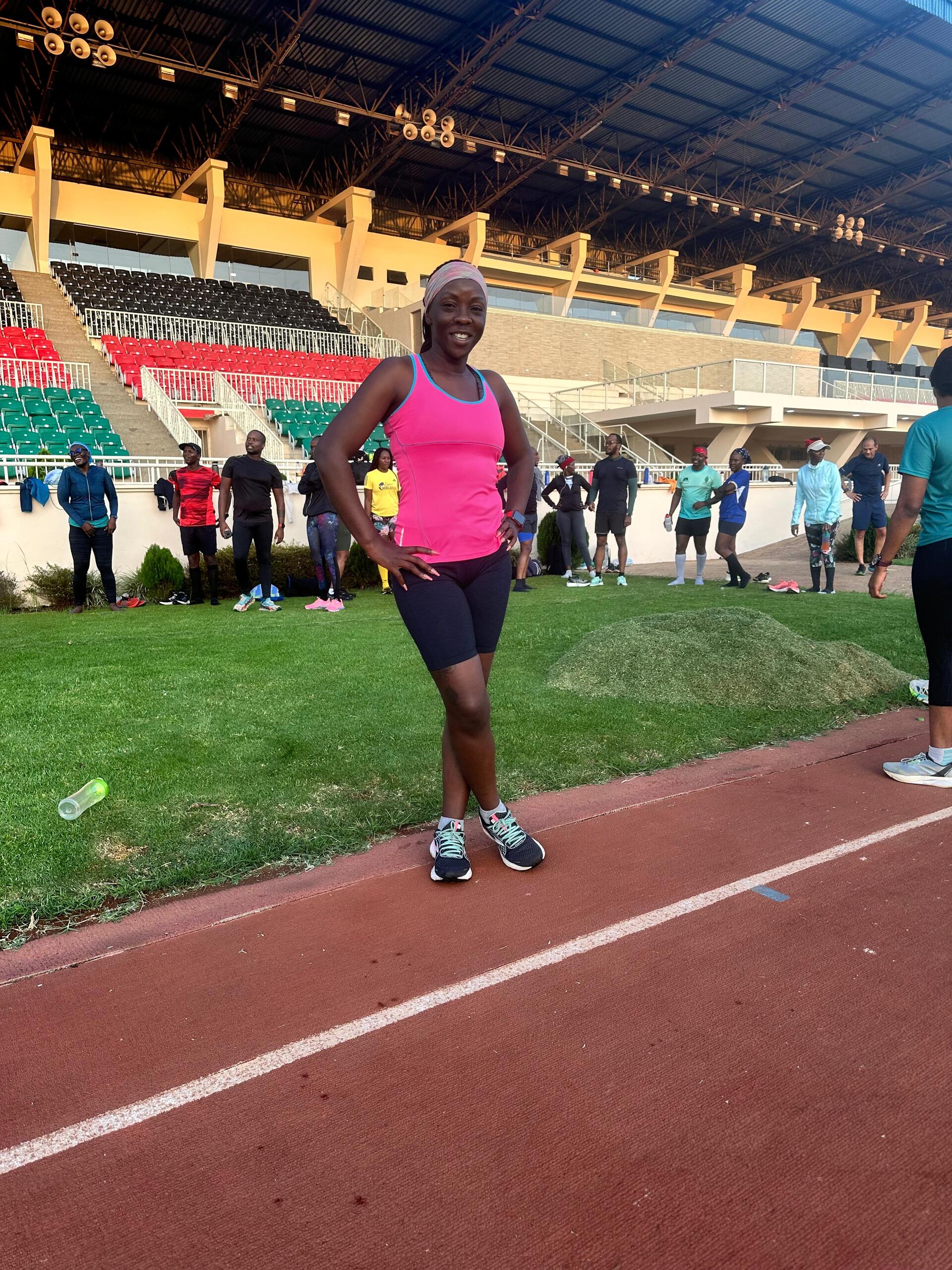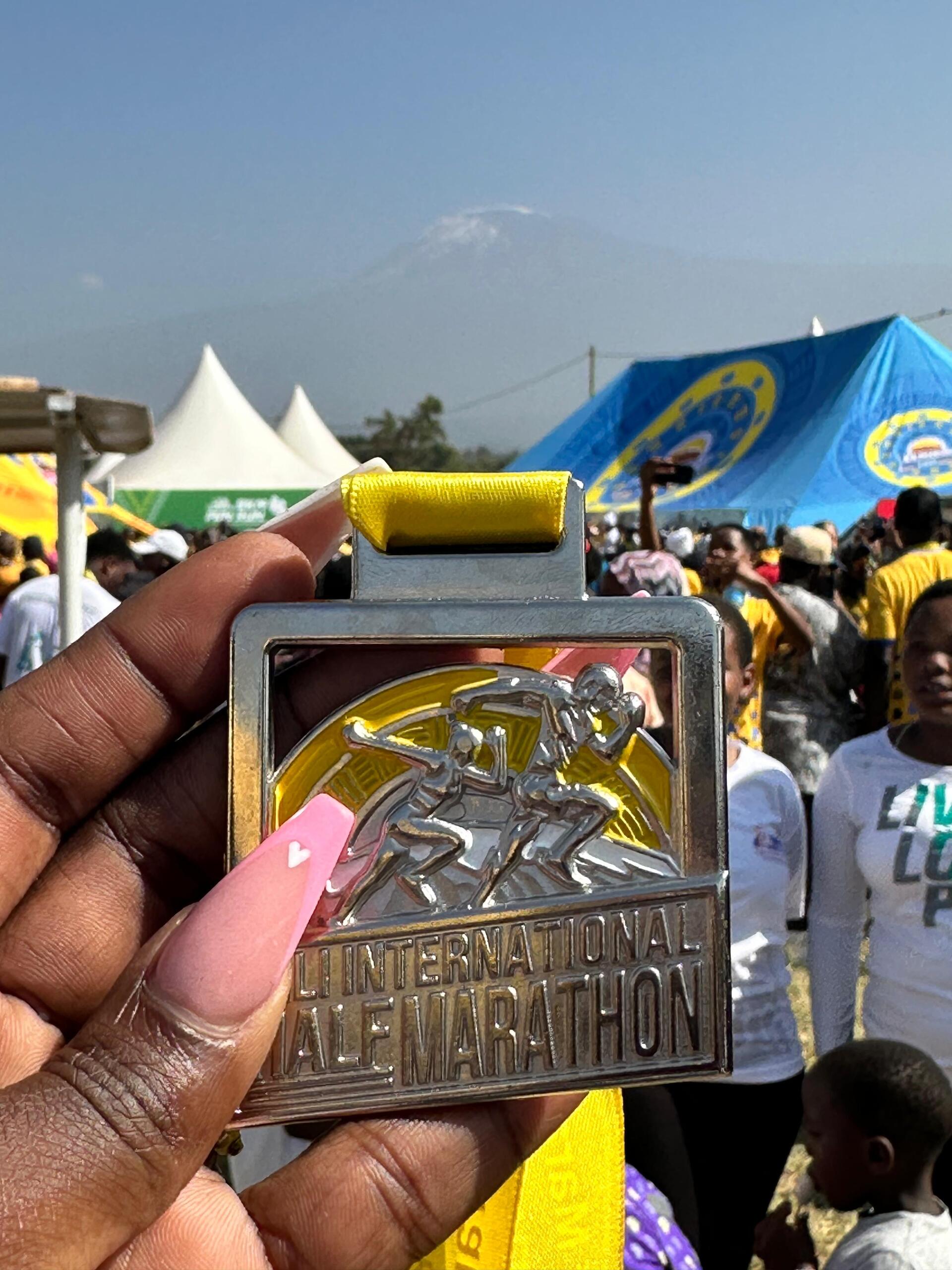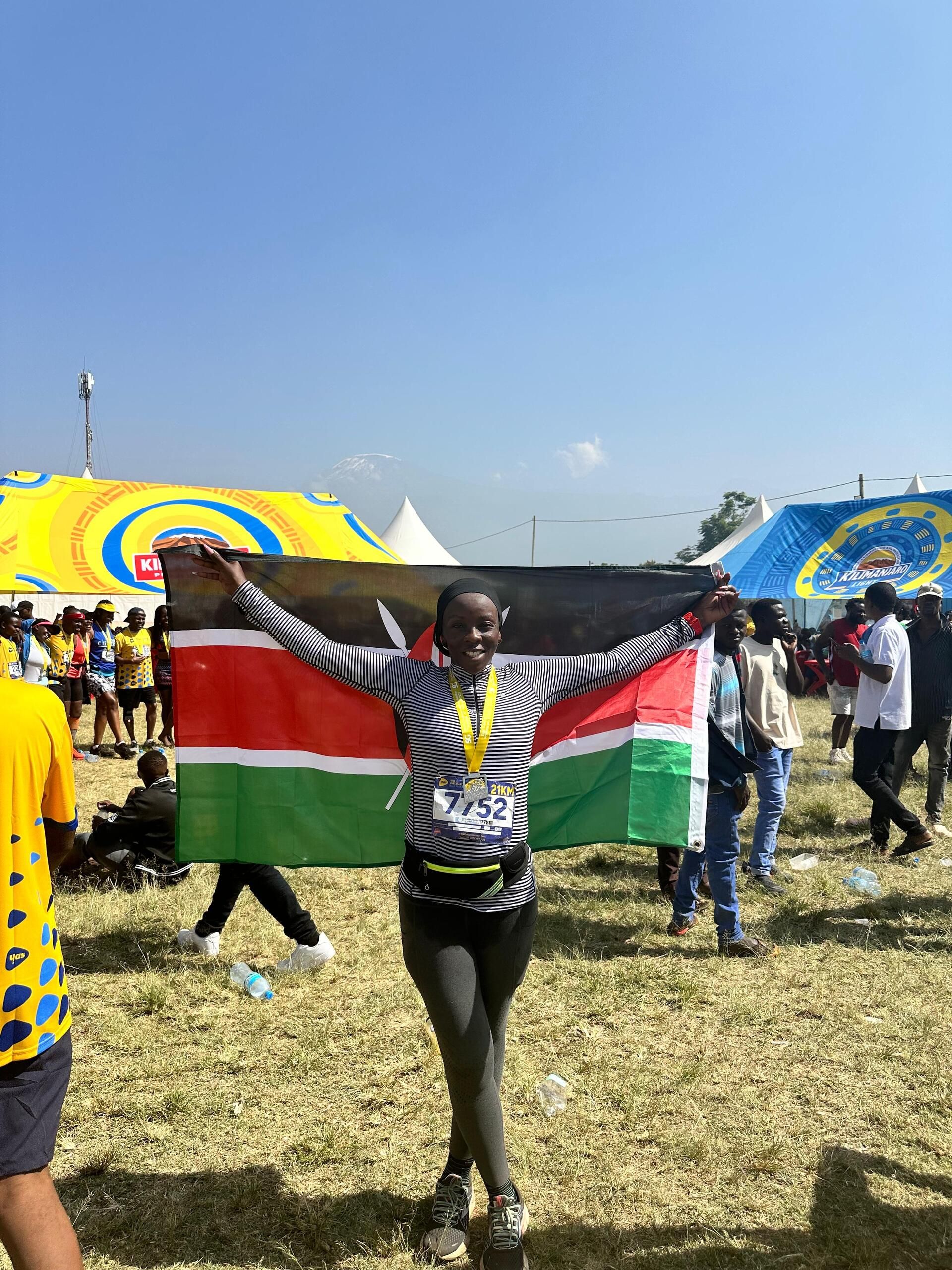- The Long Run
- Posts
- Nelima
Nelima
Nelima's Journey from Injury to Half Marathon Success

From Biker to Runner – An Unexpected Detour
It all started with a dumbbell. Or rather, an ill-placed 20kg weight left on the floor by her 'unemployed housemate'—her teenage son, as she affectionately calls him. Rushing into the house one evening, she smacked her foot directly into the dumbbell, breaking her toe in a way that no amount of wishful thinking could undo. “I stared at my toe, hoping it wasn’t broken. It was. Very broken.”
Cue three months of limping, an air boot she affectionately named ‘Robocop,’ and long days stuck at home. “I’m a chatterbox, so being alone for that long was worse than the actual injury,” she says. Little did she know, this forced downtime would kickstart an entirely new chapter.

A dumbbell accident left her with a broken toe
A Doctor’s Side-Eye and a Running Revelation
After months of hobbling around, Nelima finally returned to the doctor, eager for a green light to get back to her normal life. What she casually dropped into conversation, however, nearly gave the doctor a stroke.
“At my first visit, I was desperate to know when I could ride my motorcycle again. Now I was asking about running a half marathon.” The doctor’s face said it all—this woman had lost it.
Her decision wasn’t random. The long, frustrating months of physio had been spent relearning how to walk properly, and when she could finally move without wincing, she wanted to celebrate with a 5K race. But there was a problem—no medal for the 5K event she had set her sights on. If she was going to mark this comeback, it had to be big. So, in a mix of defiance and determination, she signed up for a 21K race instead.
But Nelima had made up her mind. If she was going to recover, she was going to do it in style. So, despite no prior experience with distance running, she signed up for a 21K race.
Her training plan? Simple. Follow the guidance of Coach Dedan, a seasoned trainer with a knack for making people suffer—constructively, of course. “He didn’t prescribe distance; he prescribed time. ‘Run for 70 minutes,’ he said. Seventy minutes of what exactly? Pain? Regret? Second thoughts? Because that’s what I felt.”
Her first attempt was a humbling 5K shuffle that took every ounce of willpower. But somehow, she kept showing up.

Back on the track, rebuilding strength step by step
Running Without Music and Other Forms of Suffering
As she trained, Nelima faced hurdles she never saw coming. One major blow? Running without music. “Coach said no earphones. Something about safety and situational awareness. But all I could think was, ‘I have to listen to myself breathe now?’”
Then came hill repeats at Geomaps, an experience that nearly broke her spirit. “I ran. I walked. I questioned my life choices. And when I reached the steepest part, I reconsidered all my friendships that got me into this – especially my two biker friends who, after conquering the Kili Marathon, have been trying to convince me to pick up running.”
Yet, amidst the sweat and struggle, something remarkable happened—she found a community. Other runners encouraged her, paced her, and celebrated her small wins. “There’s a strange joy in shared suffering. Like when your power goes out at home and you check to make sure your neighbors are also in darkness. Misery loves company.”
There’s a strange joy in shared suffering. Like when your power goes out at home and you check to make sure your neighbors are also in darkness. Misery loves company.
The Road to Race Day
As race day approached, nerves kicked in. She missed a few long runs due to family commitments (and possibly, some well-crafted excuses), but she was committed.
Race morning arrived with the kind of chaos only a first-time runner experiences. A sea of seasoned athletes surrounded her, looking way too comfortable in their neon gear. And then, the ultimate intimidation move—Karura Running Club pulled up in a Mercedes bus. “Yes, a whole bus. With matching uniforms. Meanwhile, I was just hoping my socks matched.”
Despite the shaky start, she stuck to her plan. Hydration. Fueling. Pacing. “I hit kilometer 11, and suddenly, running felt less like a death sentence. It was all downhill from there—literally, the terrain sloped downward making the run easier.”
As she neared the finish, she passed the ‘fun bus’—a group of drummers and cheerleaders hyping up runners. “For a moment, I considered abandoning my race and joining them. Drumming seemed way easier than running.”
But she pushed on. And then—glory. She crossed the finish line in 2:39, smashing her personal goal of a sub-3-hour race. “I wanted to hug someone, but I also didn’t want to collapse, so I just settled for staring at my medal like it was an Oscar.”
Reflections, Rewards, and What’s Next
Beyond the race, she realized her journey had inspired others. Colleagues started working out. Cousins signed up for their first races. Even her skeptical son, who once questioned her life choices, admitted she looked stronger. “Small wins.”
Her future plans? Kigali Marathon in June, Nairobi City Marathon, Lewa (for the wildlife views, not the hills), and maybe even Tokyo someday.
Her biggest takeaway? “Your body will always cooperate. It’s your mind that’s the real troublemaker. Once you win there, the rest follows.”

From broken toe to this moment

Crossing her first half-marathon finish line in triumph
Got your own running story? Share it with us! If Nelima survived, so can you.